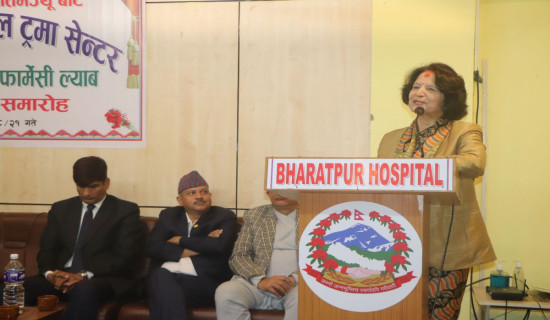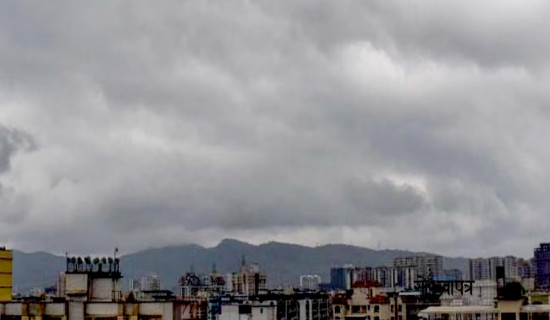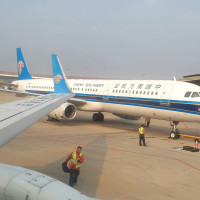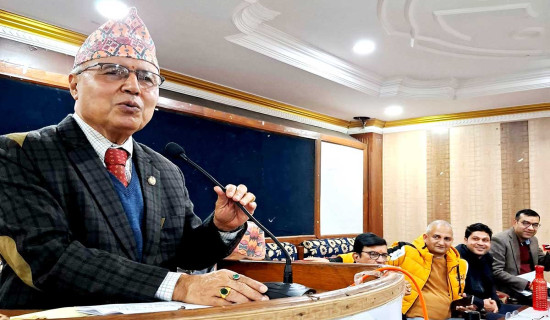- Monday, 8 December 2025
Is Nepal Still An Agricultural Country?
The relationship between land and agriculture has been a topic of ongoing debate in Nepal for years. Discussions often begin with King Mahendra’s rule over six decades ago and his controversial land reform policy. Experts argue that his motives were not to improve the existing land system, but rather to target Birta owners and Jamindars. Six decades later, the negative impact on agriculture is evident, with productivity becoming increasingly fragile and declining. However, critics have overlooked this issue, focusing instead on the king’s anti-multiparty stance and direct rule. After assuming power, King Mahendra confiscated land from birta owners and zamindars. He knew that by punishing big landowners, small landholders would have no critical role. Small landholders are those who own less subsistence-level land areas that they do not cultivate themselves, instead entrusting them to tillers. Another significant population were tillers, who depended entirely on big landowners. Reducing the land size of big owners naturally controls small landholders and tillers. Despite realising this misguided policy error, the king did not rectify it and instead proclaimed new decisions. His blind supporters were then ready to talk about the new decisions and put the old ones in the shadows.
Although this view may seem awkward, it is logical when considering Nepal’s history and current agricultural situation. Governments claim that agriculture is still the primary occupation in Nepal, but its quality and productivity have declined. Smaller land holdings have made it less economically viable. King Mahendra undermined the land system by seizing land from Birta owners and Jamindars, causing them to suffer too. Previously, these landowners provided jobs and credit to agricultural labourers. Oppositely, the king’s land policy granted tillers the right to own land, turning many Biharis into Nepalis. The reduction of landowners’ land size and the protection of tillers’ rights both caused cultivable land to shrink and become less economically viable, resulting in a loss of agricultural productivity.
Covert plan continued
In truth, King Mahendra’s arbitrary confiscation of land was a covert plan. He recognised that the land-owning class posed a threat to his rule because he had seen how the Muktisena liberation militia had risen against the Ranas in 1951 with their support. Fearing a similar revolt, he sought to eliminate these potential political adversaries and secure his reign by weakening the influence of the land-owning class. The Muktisena had received refuge and food supplies from birta owners and zamindars even in remote villages in the hills and Terai during their anti-Rana move.
King Mahendra's acts were not examined or addressed by successive governments, and no formal studies or research were done to rectify the harm he caused to the land. It seems that land policy is a low priority for them, resulting in problems and abuses. They are more focused on subdividing the land further into uneconomic units, causing the nation to suffer in agriculture. Land distribution seems to be a more aggressive topic for them than it has been for Mahendra. So the existing governments seem even more liberal and philanthropic, dividing holdings into even smaller fragments and allotting them to the landless. While this may seem like social welfare at first glance, a deeper look reveals the opposite.
King Mahendra’s land reform was unreasonable and biassed because he implemented the policy before developing the necessary infrastructure, such as irrigation canals, for advanced agriculture. Present-day governments are making a bigger mistake by neglecting the mistakes of the Mahendra policy. One can blame them for their decisions, which sound politically motivated and lack research in agro-economics or land management. The neglect of governments has resulted in negative consequences three decades later. Nepal’s agricultural productivity now paints a bleak picture. Just 30 years ago, Nepal had an abundance of food grain production and exported a significant portion. However, successive multiparty governments have failed to address the issue. Instead of supporting farmers, landowners, and agricultural labourers, they have continued to damage the system and productivity. Where is the science of land and agriculture now? And where are the large tracts of land for specialised farming?
Where is Nepal’s agriculture?
Land reform is a sensitive issue for unstable governments that lack power and confidence. They are further weakened when they function in a coalition of disparate parties. Despite claims of promoting social justice by providing land to the landless, their actions have harmed the agricultural system. In reality, no government has demonstrated the vision or planning necessary to optimise land use, nor has the opposition come forward with new ideas. The idea of consolidating small plots into larger tracts and using advanced technology for specialised crops seems beyond imagination.
Currently, large tracts of land are scarce, and small holdings are not being fully utilised or yielding abundant crops. The situation is worsened by a haphazard deindustrialization policy at the government level and a lack of private industrial entrepreneurs. Over sixty large-scale industries have been liquidated or dissolved in the last 30 years. No succeeding government has specific plans to support agriculture with inputs, tools, seeds, and fertilisers, as if it is a low priority. As a consequence, land and farmers suffer from a lack of support during sowing and planting. After harvest, farmers are left to fend for themselves, as they receive no guarantee or responsibility for marketing or purchasing crops. Vegetable, fruit, and livestock farmers are left stranded every year with their products. Currently, the balance of payments is unfavourable as the country imports everything, including food grains, seeds, and inadequate quantities of fertiliser worth billions. These perspectives categorically deny that land and agriculture are secure anymore.
Time has passed, and there are now a large number of vulnerable absentee landowners who cannot claim rent from tillers through legal action even when it is not paid. Agriculture dependent on the monsoon is even worse off. The state of affairs is contradictory: when there are no industries or agriculture, the youth labour force is abroad! If land for agriculture is available, the youth labour force is abroad! Those who remain are victims of a lack of seeds and fertilisers. The population has exploded, and the prime labour force is draining out across the borders in search of job markets. In-migration from villages to cities has swelled, with people moving away from their villages and fields. The city's outskirts have been converted into residential plots, eliminating the potential for agriculture. Scientific agriculture is beyond reach when livestock breeding, and fruit farming are weak. This clearly defines Nepal as no longer a country whose main occupation is agriculture. Is King Mahendra solely to blame?
(Baral is a retired lecturer of English.)





-square-thumb.jpg)











